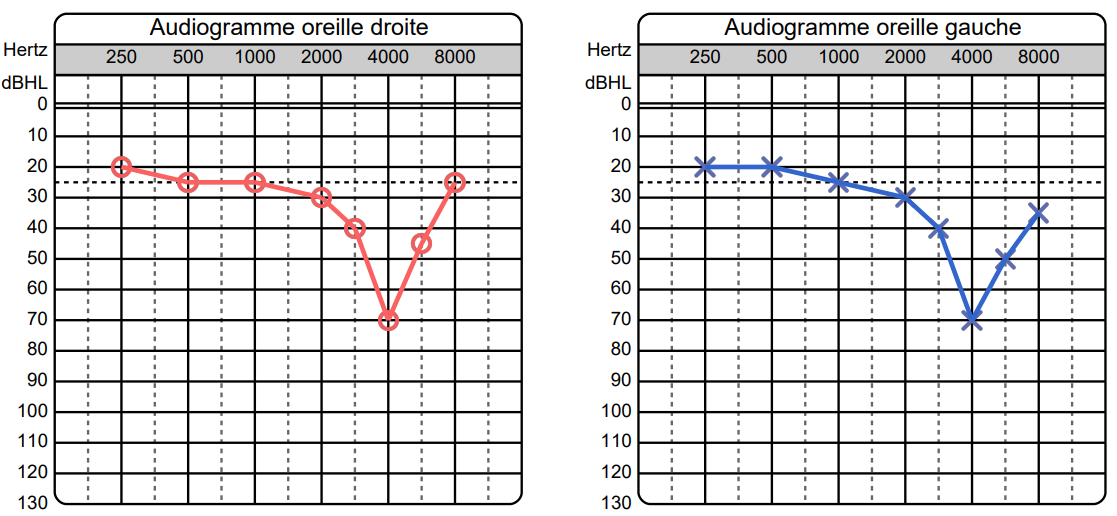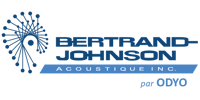HEARING SCREENINGS
Industrial hearing screening
To detect early hearing loss

By Hany Ghonaim | Founder at ODYO
Industrial hearing screenings are simplified, rapid assessments designed to detect hearing disorders in workers exposed to high noise levels. In an industrial environment, where noise can reach harmful levels, these tests are essential to prevent hearing loss and preserve employees' hearing health.
Hearing screenings are based on assessments that measure a person's ability to perceive different sounds, using audiometers. These instruments produce pure tones at various frequencies, from the lowest to the highest, and at different intensities, enabling precise identification of areas where hearing loss may be occurring. These assessments are carried out in controlled environments by healthcare professionals, such as audiologists or specialized technicians.
The importance of hearing screening in the workplace
Prolonged exposure to excessive noise at work can lead to permanent hearing loss due to neurosensory damage in the cochlea, the organ responsible for hearing. Typically, hearing is affected in the high-frequency range, i.e. between 3000 and 6000 Hz, in both ears equally, more frequently on the 4000 Hz frequency.
The image below shows typical findings on an audiogram of hearing loss caused by exposure to noise in the workplace, where a notch is visible at the 4000 Hz frequency in both ears.

Generally speaking, irreversible damage to the ear sets in slowly over the first 10 to 15 years of noise exposure, and hearing loss can continue to worsen with ongoing noise exposure.
Consequently, since noise-related losses often develop gradually, it is vital to detect the early signs of occupational deafness with hearing screenings.
Regular audiometric examinations in industry make it possible to identify the first signs of hearing fatigue before they become noticeable to the workers themselves, and to act quickly to correct the situation before the worker develops significant hearing loss caused by noise exposure.
Advantages of early detection of hearing loss
Hearing screening plays an essential role in measuring the impact of noise on workers' hearing health, enabling prevention strategies to be fine-tuned and corrective measures to be put in place. When early hearing loss is detected following hearing screening, action can be taken to limit its worsening, by adjusting hearing protection and raising awareness of the effect of noise on hearing health, while emphasizing the importance of adhering to hearing loss prevention programs.
What's more, in the event of hearing loss, personalized medical follow-up can provide invaluable support in assessing the cause and determining appropriate interventions. Indeed, following the results of hearing screenings, consultations with an audiologist or ENT doctor can be a useful complement to complete the assessment.
Measuring the impact of noise on workers' hearing health
Industrial hearing screening provides an objective means of assessing the effectiveness of a company's hearing loss prevention program. To measure the impact of noise on workers' hearing health, it is essential to carry out hearing screenings at the following times:
-
On hiring: Given that the employer's responsibility for health and safety begins as soon as an employee is hired, it is crucial for companies to know workers' hearing acuity as soon as they join the company. This test will serve as a reference for subsequent examinations carried out by the employer.
-
Periodic : Periodic examinations, carried out by the employer, can be scheduled annually, every two, three or five years, depending on company regulations or policies. These examinations are mainly used to assess the impact of industrial noise on workers' hearing health, by comparing the results with those of the baseline hearing screening performed at the time of hiring.
-
Final audiogram: When a worker leaves the company, the employer's responsibility for health and safety ends at that precise moment. It is therefore essential for the employer to carry out a final hearing screening to assess the evolution of hearing acuity between hiring and the employee's departure.
Interpreting screening results
Hearing screening results must be interpreted by an audiologist, a physician, or another competent person with specialized training.
However, here are a few essential concepts for all those responsible for health and safety in the workplace to be aware of:
-
Normal hearing : Means that all hearing thresholds are ≤ 25 dB, at all frequencies, in both ears.
-
Hearing loss: Means that there is at least one hearing threshold ≥ 30 dB, at any frequency in either ear.
-
Possible noise-induced hearing loss : A difference in hearing threshold ≥ 15 dB between the frequencies 3000, 4000 or 6000 Hz and an adjacent frequency can be attributed to noise.
-
"Significant Threshold Shift (STS)" : Means an average increase of ≥ 10 dB in hearing thresholds at the frequencies 2000, 3000 and 4000 Hz in either ear between a periodic hearing screening and the reference hearing test. This definition is commonly recognized under the acronym STS OSHA. In Canada, the CSA also allows the use of this next calculation to assess whether hearing has potentially decreased due to noise exposure: an increase of ≥ 15 dB at 3000 or 4000 Hz in either ear.
Recognized standards and guidelines
To be relevant, workplace hearing screening must be based on best practice. In Canada, theCSA Z106.6-16 standard is used as a guide to ensure the quality and compliance of hearing tests carried out in the workplace. Among other things, this standard mentions the following best practices:
-
Ambient noise in the environment must be assessed before hearing tests are performed, to ensure compliance with the standards set out in ANSI/ASA S3.1.
-
Hearing tests should assess hearing acuity at frequencies of 500, 1000, 2000, 3000, 4000, 6000 and 8000 Hz for both ears.
-
The administration of a questionnaire and collection of hearing health history prior to the hearing tests is necessary.
-
A rest period of 12 to 14 hours must be observed before the baseline and final audiograms are administered.
CSA Z1007-16 places hearing screening within the context of a hearing loss prevention program. Here are some best practice recommendations shared by this standard:
- Periodic hearing screenings should:
- be performed annually ;
- be performed more frequently if daily noise exposure levels exceed 105 dBA ;
-
be performed more frequently if workers are likely to be exposed to combined agents, such as ototoxic chemical agents.
-
Hearing screening results should be reviewed by the hearing loss prevention program manager to work on improving program performance.
As far as regulations are concerned, the Règlement sur la Santé et la Sécurité du Travail (RSST) does not currently require employers in the province of Quebec to carry out hearing screenings for their employees. However, several Canadian provinces and territories, as well as the United States, require hearing screening at least once every two years. Here is a table summarizing the obligations and frequency of mandatory hearing screenings in North America:
The role of hearing screening in preventing hearing loss
Integrated into a hearing loss prevention program, regular hearing screenings help to reduce the incidence of occupational deafness. Using the results of hearing screenings, companies can implement customized corrective measures, such as improving personal protective equipment or modifying work environments to reduce noise exposure.
Hearing screening sessions provide valuable opportunities to strengthen the link between workers and the company's hearing loss prevention program. It's a time when we take the time to explain the results of audiometric tests, so that each worker has a concrete understanding of the consequences of noise and its potential impact on their hearing. These moments are also perfect for reminding everyone, even those with no hearing loss, how essential it is to protect their hearing and use hearing protectors correctly.
Ultimately, investing in regular and rigorous hearing screenings is a proactive approach that demonstrates the company's commitment to the well-being of its employees and the sustainability of its operations.

Measure the impact of noise on your workers' hearing health
Strengthen your hearing loss prevention program with our on-site hearing screening services at your company or at one of our partner audiology clinics.

-1.png?width=144&height=72&name=BJA%20_%20Logo%20Color%20%20(1)-1.png)
